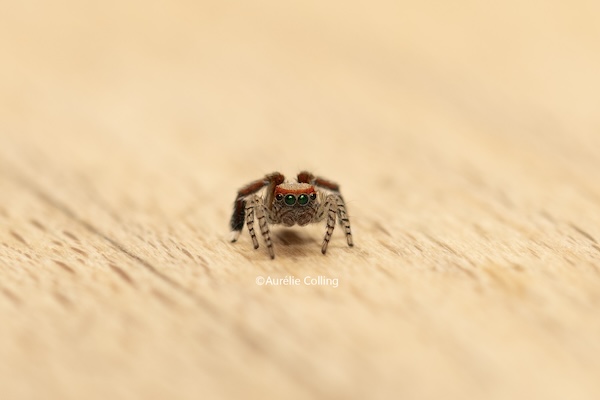 Saitis barbipes spider;
Credit: Aurélie Colling
Saitis barbipes spider;
Credit: Aurélie Colling
On Wednesday 14 May 2025, Luxembourg’s Naturmusée (MNHN - National Museum of Natural History) announced that the Mediterranean jumping spider, Saitis barbipes, has been found in Luxembourg for the first time.
MNHN reported that the colourful Saitis barbipes, previously found mainly in the Mediterranean region, was seen for the first time in the Grand Duchy on Tuesday 6 May 2025.
Museum employee, Guy Colling, made the discovery in the south of the country. MNHN stated that the tiny but striking spider was clearly identified and evidence of its presence was provided.
MNHN added that the males of this jumping spider are known for their brightly coloured, fan-like legs and spectacular courtship behaviour. They belong to the so-called “peacock spiders” and are becoming increasingly popular among nature observers. “Saitis barbipes is considered a heat-loving species that is typically found in southern regions of Europe,” explained Guy Colling, head of the Population Biology and Evolution department at the museum. “Its appearance in Luxembourg is an extraordinary find – and at the same time provides a vivid example of the changes that are becoming visible here as a result of climate change.”
The appearance of Saitis barbipes in Luxembourg is not an isolated case. Scientists at the MNHN have documented several Mediterranean and southern European species expanding northward in recent years. Other heat-loving insects such as the European mantis (Mantis religiosa) and the Southern oak bush-cricket (Meconema meridionale) have also established populations in Luxembourg, where they were previously absent. These range expansions are reported to align with climate data showing that Luxembourg's average annual temperature has increased by approximately 1.5°C since the 1960s, creating more favourable conditions for species typically restricted to warmer southern climates. This spider discovery represents yet another biological indicator of the ongoing climate shifts affecting Europe's ecosystems.
The find is currently being scientifically documented and entered in the national biodiversity database, iNaturalist. It is also expected to raise awareness of the effects of global warming on local biodiversity.








